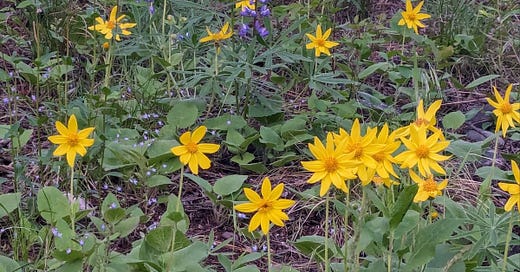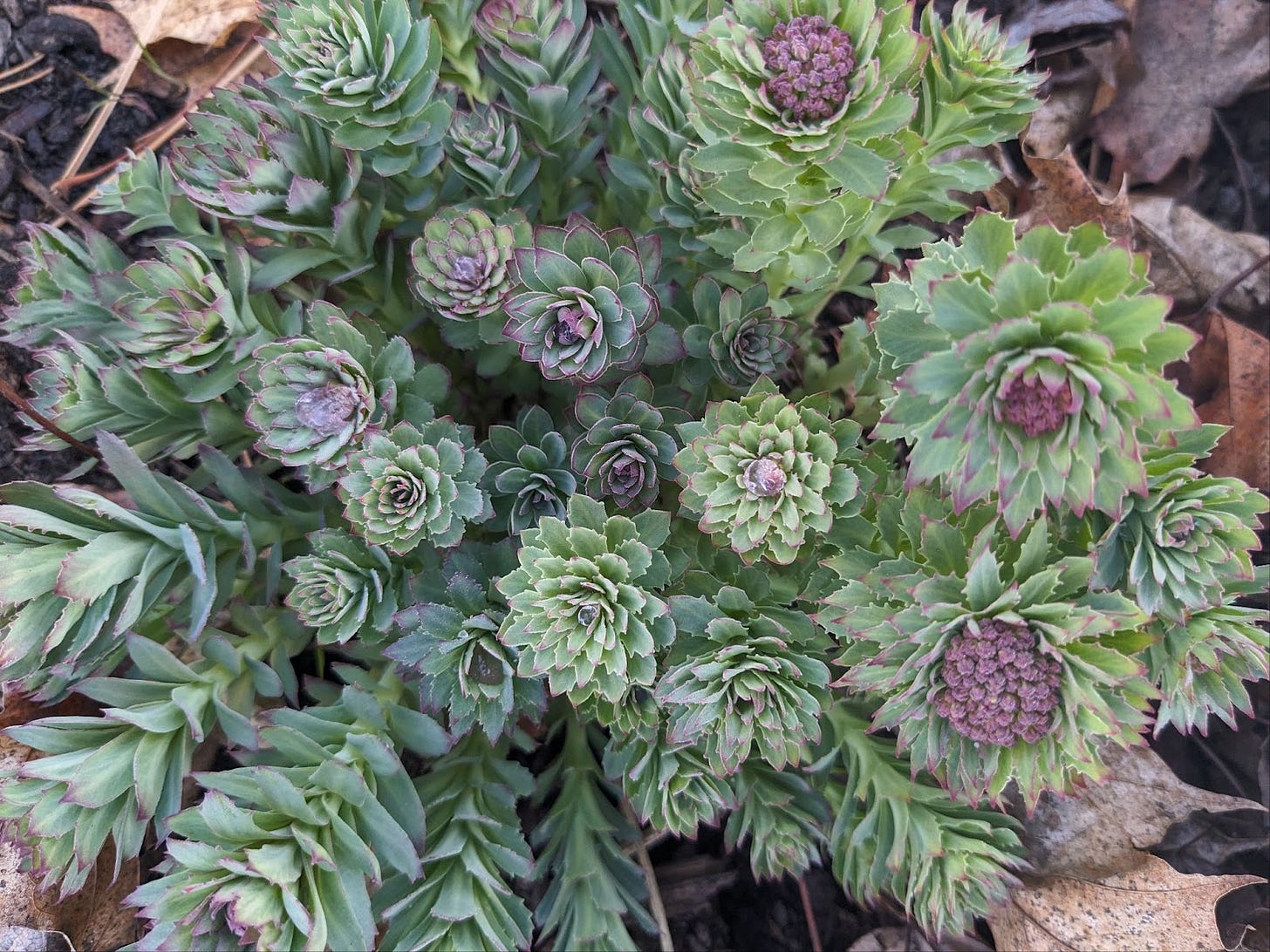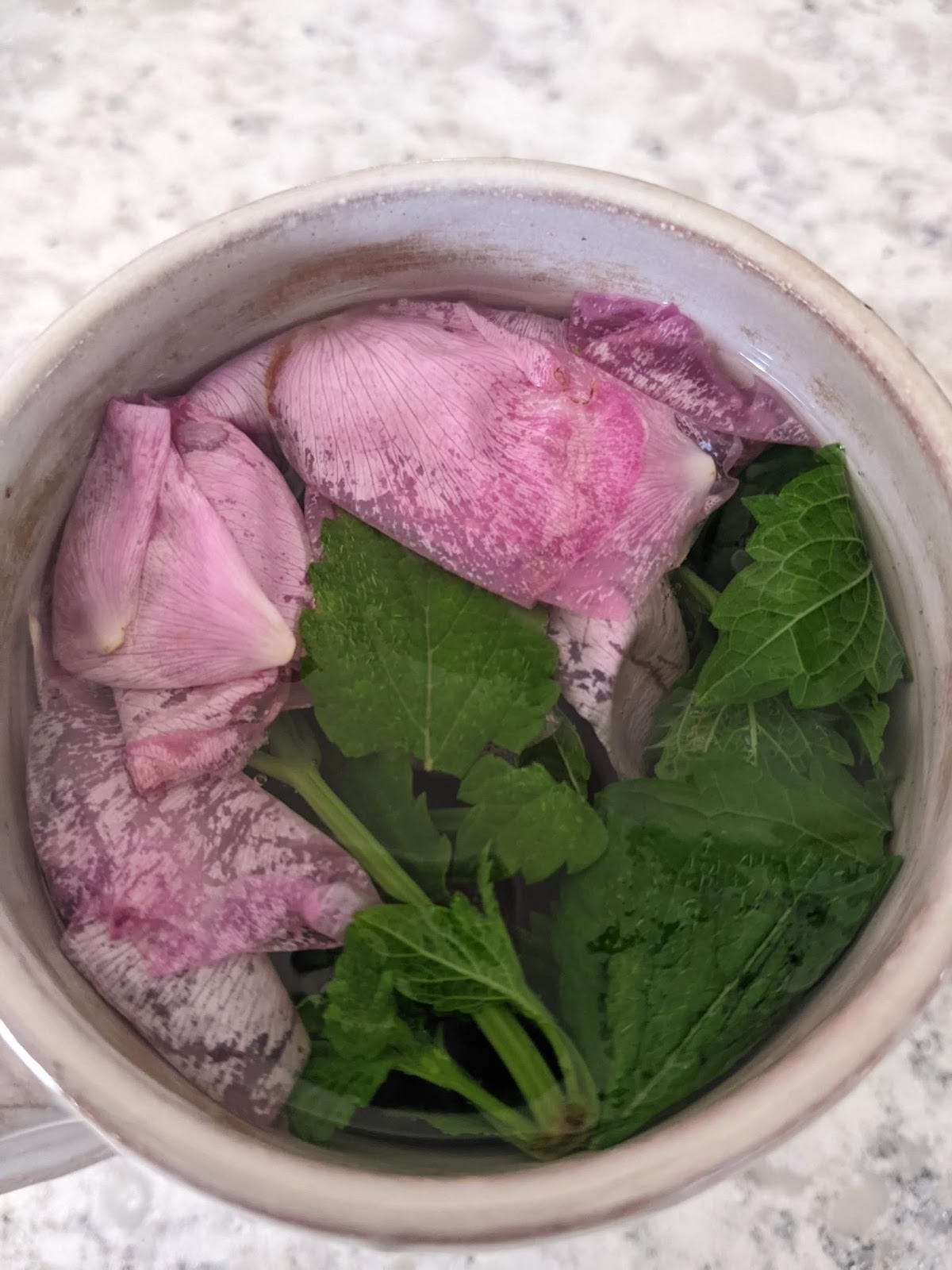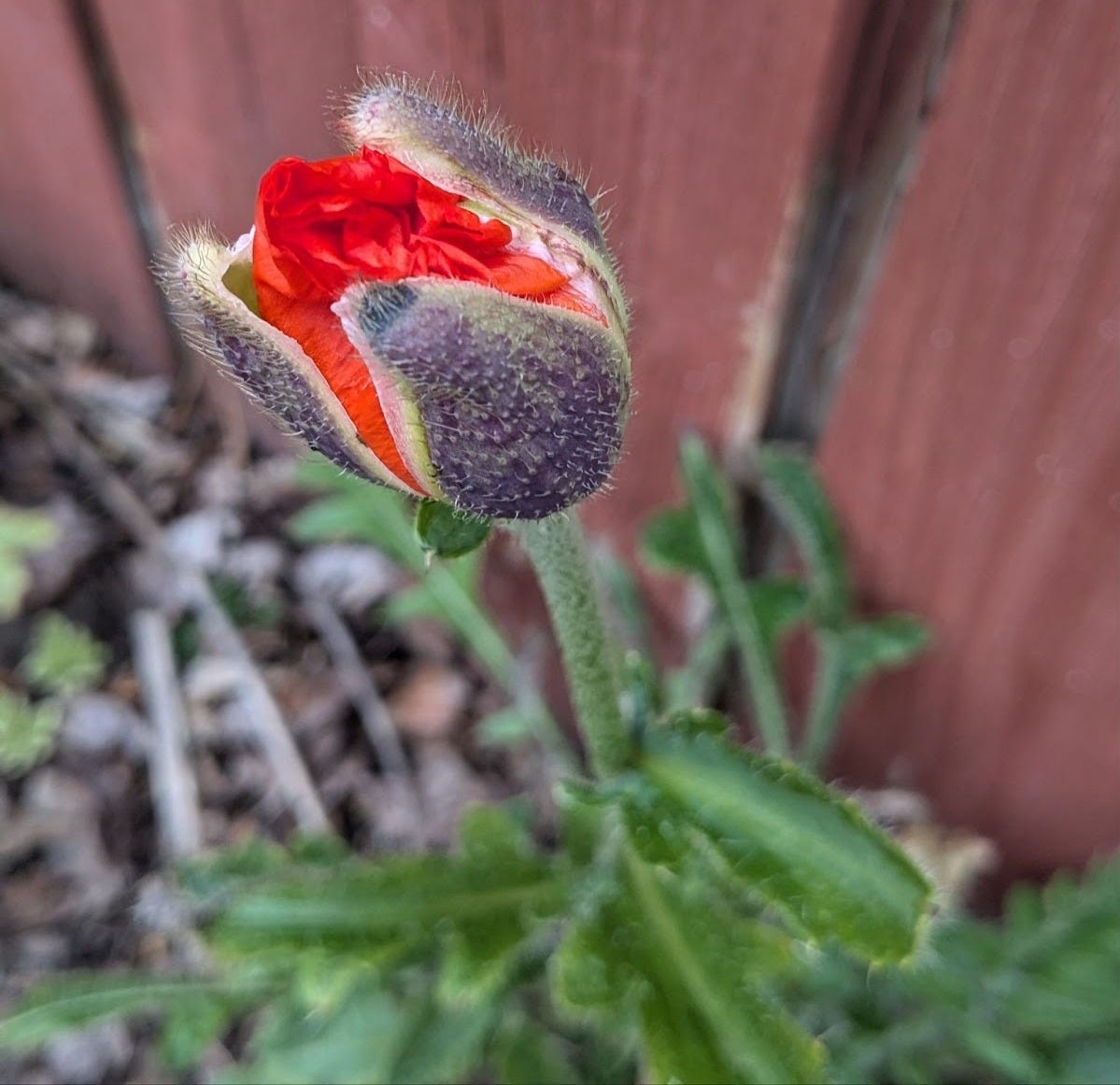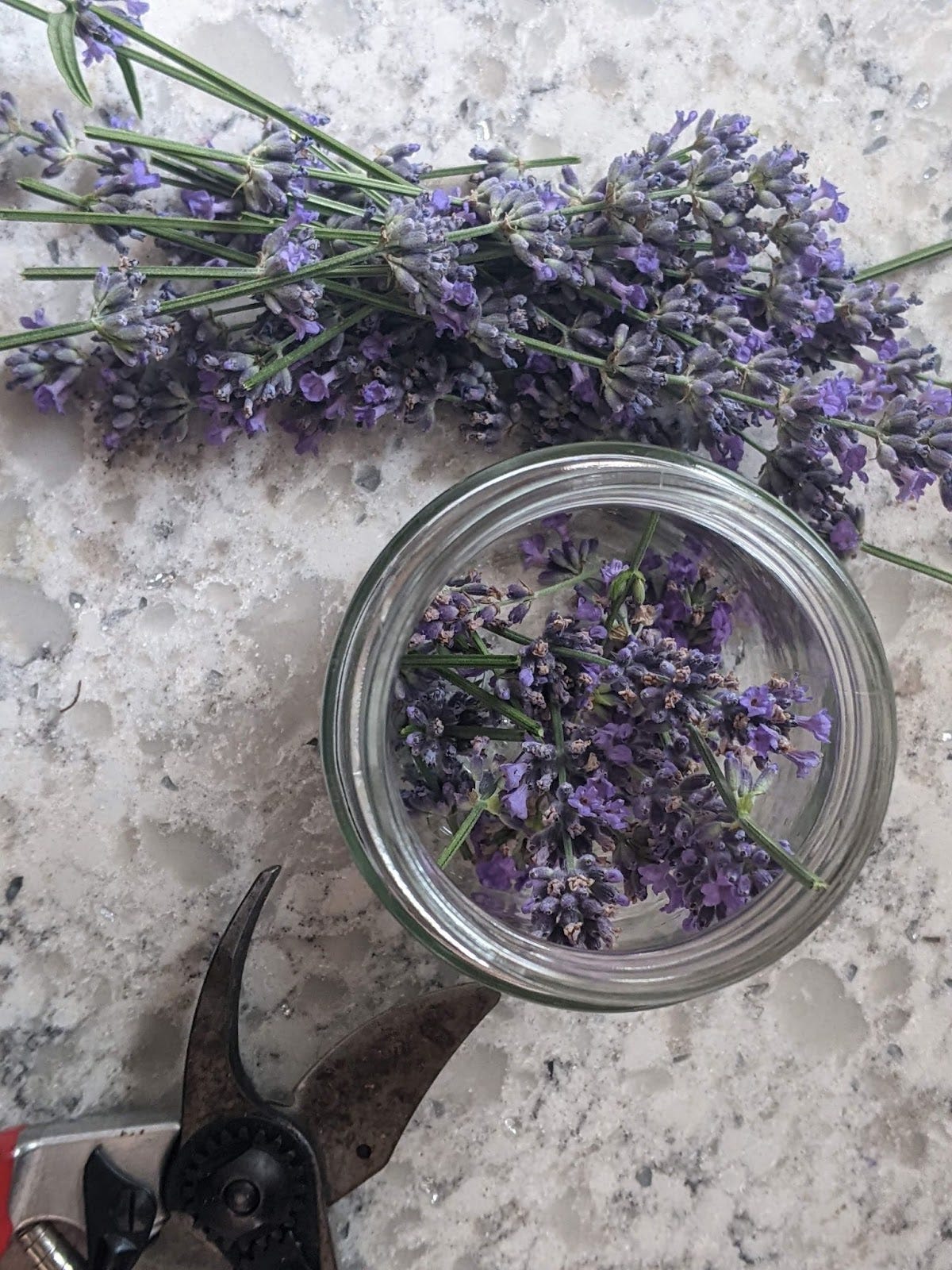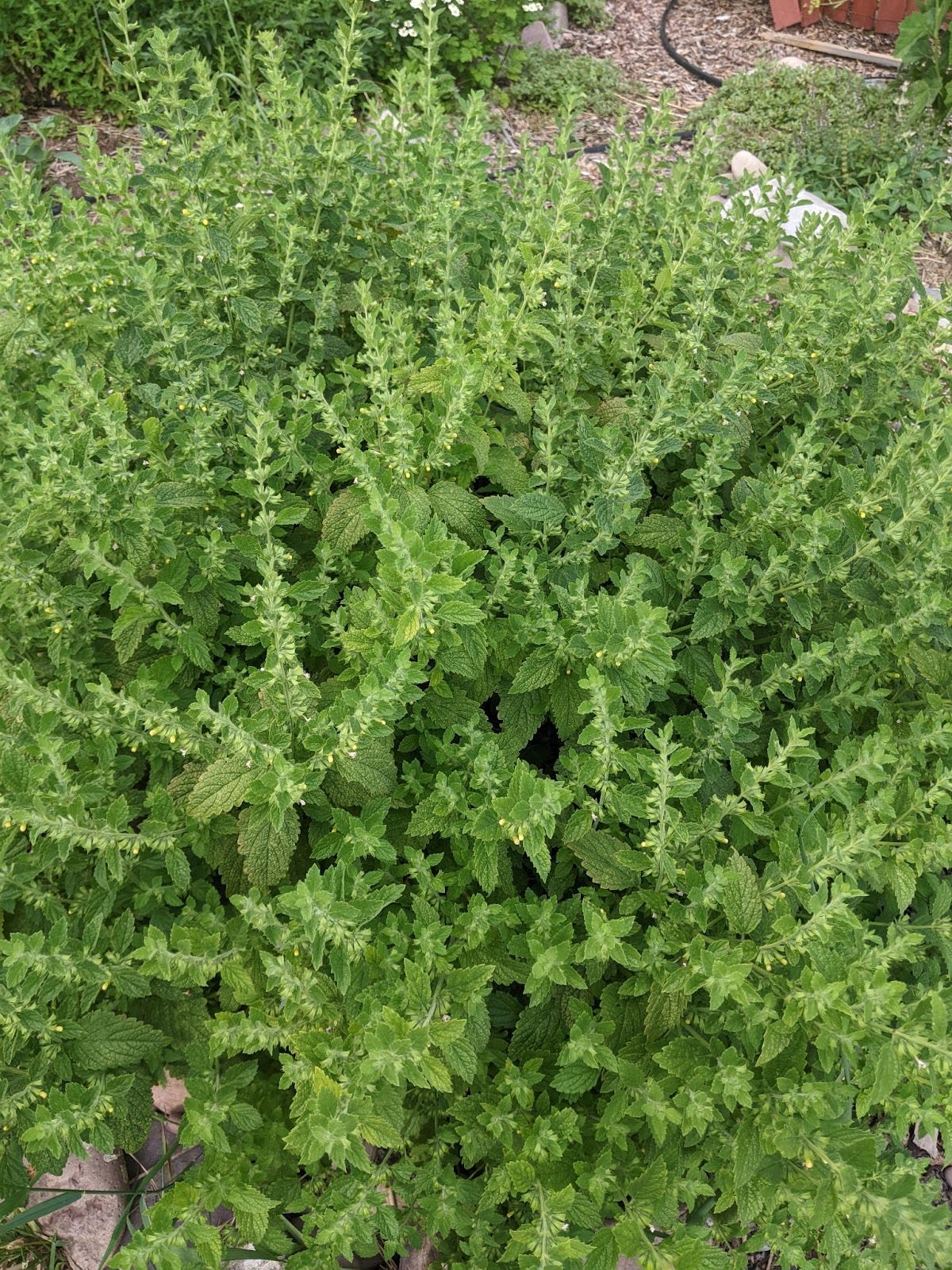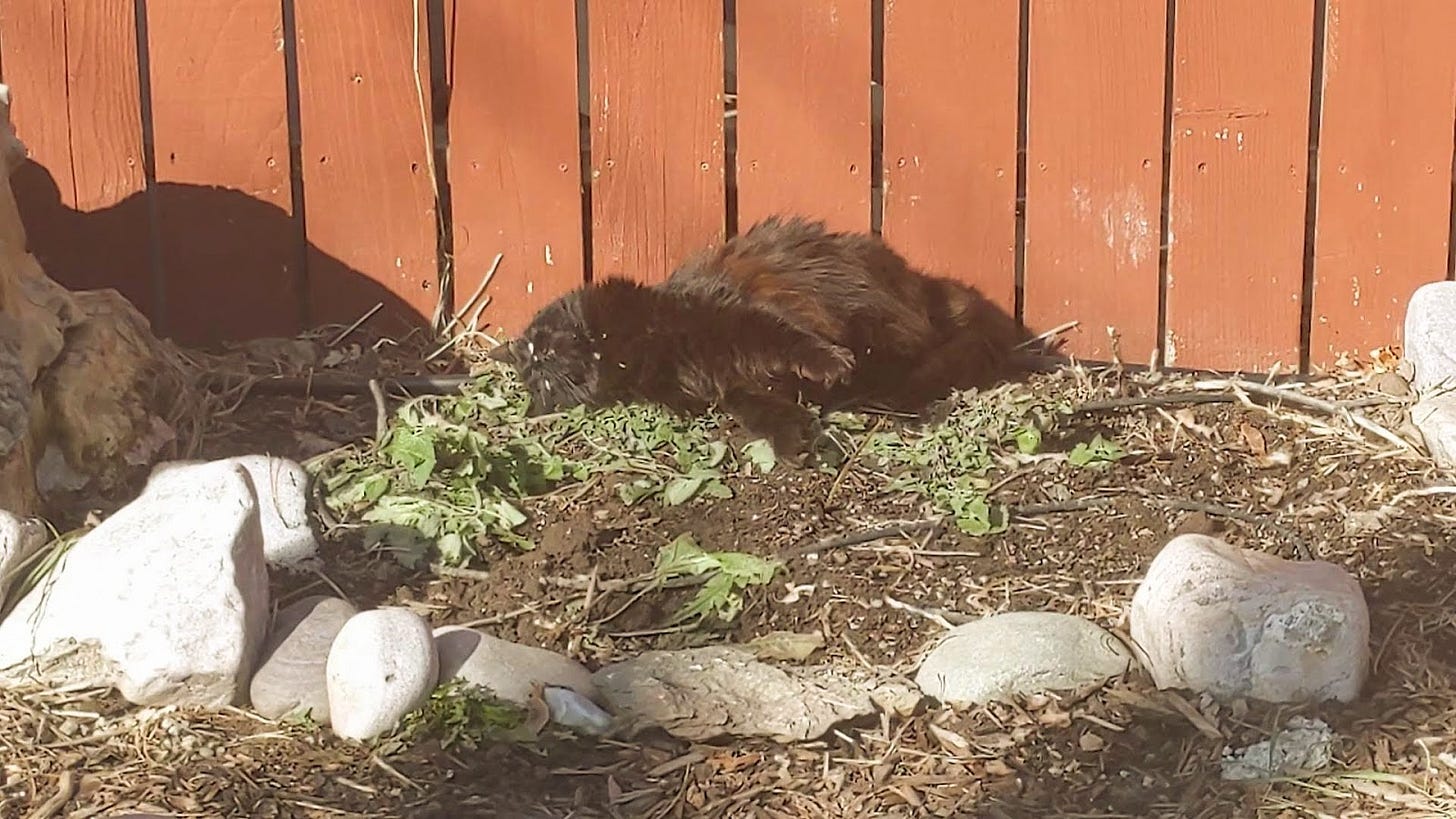Today I’m sharing inspiration for growing herbs. The intention behind this Substack is to foster conversations that increase our reproductive health agency. Learning about the power and possibility of herbal allies has been part of that journey for me. Here I share my perspective as an herbalist, and a dedicated, but fumbling gardener.
This newsletter is delivered every two weeks. I’m thinking about writing a pretty personal piece about my fertility journey thus-far for the next edition. We’ll see. Thanks for being here. Please comment and share if you think this information is valuable.
—----------
The snow’s been constant all day. In the backyard, only the tallest foliage peeks through.
We nordic skied in a winter wonderland, and drove home slowly, car sliding in the snow.
Hot tea steeps next to me, and I’m wearing two pairs of leggings against the chill that creeps into our 1950s home.
The world outside is covered, white, and sleeping.
And yet….I am beginning to feel the unmistakable pull of my grow lights, whispering where they’re buried in the garage.
I feel the pulse of my stored seeds stirring, and beginning to whisper.
Despite all appearances, the time for kindling seeds is coming.
My gardening journey
The year is 2022 and I’m eagerly flipping through The Organic Medicinal Herb Farmer by Jeff and Melanie Carpenter. I lust after the vibrant pictures of whimsical black cohosh, and fields of shimmering blue vervain; I carefully curate my list of plants, never mind the book was intended for farmers and I had less than 1/10 acre. This is year 1 of planting of an herbal garden.
Since then, I’ve learned some lessons.
It’s easy to get excited (if you’re the kind of person excited by plants and gardening), and hard to narrow down what to grow. As you’ll quickly learn, just because you can grow something, doesn’t mean it’s the best choice. Here are the questions that come to mind now that I wish I’d asked 4 years ago:
What will grow well in my Hardiness Zone?
What is a good fit for my space (size, sun and shade, aesthetics, etc)?
What herbal allies do I enjoy growing and like to have on hand for personal use?
What herbal allies are available to forage ethically, and safely in my surrounding area? —Here’s a resource to learn about wild plant collection.
What part of the plant will I use? (e.g. leaves, flower, root)
What is the life cycle of the plant? (e.g. perennial, annual, biannual)
What does the plant need to thrive? What's the anticipated care, conditions, and maintenance time?
Herbs for beauty, presence, and connection
Some of the medical plants I grow simply because it’s a joy to get to know them –buying an herb dried or otherwise prepared is so different from observing and tending it.
Rhodiola rosea is a slow-growing, succulent adaptogen, which supports stress response and has been used by endurance athletes for increased energy and performance. I’ve loved watching Rhodiola grow and learning more about her through observation. Since she is slow growing and it’s the roots that are used medicinally –usually harvested after 3-5 years, I grow her simply to observe and enjoy.
Year 3 Rhodiola plant in my home garden
Roses (Rosa spp) I love having roses around. They are a traditional heart medicine and tonic with many herbal uses. In future years, when my bushes are more robust, I will likely harvest more petals and dry them to add to oils, other body products and teas. For now, they’re simply a joy to breathe in and savor via a fresh cup of tea.
Photo: tea with fresh rose and lemon balm
California Poppy (Eschscholzia californica): I will make a tincture of these eventually. They’re a great, gentle aid for sleep, and anxiety. These last four years, I’ve simply loved watching their brief, brightness in my garden. They only bloom for a day or two, and yet…the brilliance of those days is so worth their presence.
Photo: backyard poppy, ready to burst.
Herbs I use most
These are the herbs I use most. I use them for teas, tinctures (a preparation with alcohol), oxymels (a preparation with vinegar and honey), syrups, and bodycare products. They are reliable go-tos throughout the summer, and typically what I dry and use all year.
Lavender (Lavandula angustifolia) I love the fragrance. I love the aesthetic. She’s a perennial, and low maintenance. Enjoys hot sun, and once settled in, not too thirsty. Relaxing, soothes the nervous system, helps relax muscles. Lavender has volatile oils--they’re very small structurally and able to easily enter the bloodstream. They work with the nervous system and can inhibit certain neurochemical responses associated with stress response/sympathetic nervous system. Thus, lavender can help us get out of our stress response and relax. There have been a number of clinical trials using lavender with promising results around anxiety, insomnia, mild depression. I love using lavender for teas, hair and body oils, bath bombs, and dessert recipes and mocktails.
Photo: Lavender harvested from my backyard. Cutting the tops for use in teas and oils. I’ll garble once dry.
Lemon balm (Melissa officinalis): Oh the smell. Enlivening, refreshing, lovely in sun teas (where you add herbs, pour water over, and let steep in the sun). Lemon balm makes a delightful bright tincture–one of my go-to for traveling for its immune system/antiviral properties. It’s also lovely to sip as a tea, on its own or delightful blended with mint. If you want to read more Melissa allure, do a little research on Lemon balm and Roman times.
Photo: My thriving, spirit-enlivening Melissa.
Calendula (Calendula officinalis) The abundance of a calendula plant is only matched by its abundance of uses. I love growing calendula because of its ease and vibrancy, and because the plant has many uses. Personally, I pick calendula flowers, dry the leaves, and make an herbal oil, nourishing for the skin, and supportive for the lymphatic system. I also love throwing calendula into teas for its lymphatic support, and the bright dash of color it adds. Though an annual in MT, it self-seeds with abundance; I’ve never needed to replant it.
Photo: calendula I harvested for use in a medicinal oil.
Catnip (Nepeta cataria): Catnip is another mint. It’s easy to grow and is considered a short-lived perennial. In my garden I’ve found it has not spread and grown as robustly as other mints–this may have something to do with the attention of our kitty–Kitty Biscuit (KB), who can be found rolling in it all hours of the day. Despite KB’s enthusiasm, catnip is for humans too. For us, it helps with colds, chills and congestion, and it soothes the nervous system. It’s added to the tea for soothing properties and excellent flavor--in the mint family, however less overpowering than most mints.
Photo: KB luxuriating in the catnip patch in early Spring! As you can see, it doesn’t has the easiest time with our feline friend.
Tulsi/Holy Basil (Ocimum spp): A sacred plant in India that grows easily in US gardens. Studies have shown an increase in immune functioning with regular doses. It has a high volatile oil content, which is believed to be responsible for its antioxidant-related effects in the body--it increases the body's ability to deal with free radicals and is believed to help protect cells from damage caused by environmental exposures, including radiation. I grow Tulsi along with typical culinary varieties of basil—if you’ve grown basil, you can grown tulsi! It comes in beautiful reds, purples and greens.
Raspberries (Rubus idaeus): use the leaves for tea, enjoy the berries. Win-win. I harvest leaves throughout the growing season and use them for tea, fresh and dried. They are ultra nutritious and especially supportive for the reproductive system.
Red clover (Trifolium pratense): I’ve been working on building up the clover population in my lawn–a flowering or herbal lawn, some say. Another traditional women’s herb with a slightly sweet, earthy flavor. Red clover is nutritive and also an alterative, which means it supports the body to eliminate waste. In the case of red clover, it’s particularly supportive of the lymphatic system.
Surprising herbal allies I’ve successfully grown:
I’ve found Ashwaganda (Withania somnifera), an adaptogen, quite easy to grow from seeds. It’s in the nightshade family and can be grown like a tomato. Plus unlike other adaptogens, where you wait multiple seasons to harvest the roots, you can harvest ashwagandha roots the very first fall you plant them. Traditionally the roots are used for medicine either as a powder, which is mixed with yogurt, ghee or (or adapt as you may), or via a decoction.
Stinging Nettles( Urtica dioica) has been quite content in the back corner of my garden. She doesn’t bother anyone and has yielded a steady crop these last two years (after one year of slow establishment). If you’re unfamiliar, nettles is a highly nutritious herb that can be used as a food (in soup, or as cooked greens), and as a tea. While it’s possible to forage nettles in the lands around my home, I’ve never found a clean, abundant patch I feel happy about harvesting. This was an experiment that so far, so good. If you have access to a wild patch, you may want to leave this out of your home garden.
In the wild
Just because you can…. I was excited to have elderberries at my fingertips. In retrospect, I’ve realized it is simple, ethical and easy to get all the elderberries I want in the nearby public wilderness, where the shrubs are abundant and have the space they need to thrive. One elderberry in my backyard has remained puny and struggling, while the other has dreams of expanding beyond the constraints of the space I’ve granted. Our current arrangement isn’t ideal for me or them.
Photo: wild elderberry happy and expansive.
I was excited to grow mugwort (Artemisia vulgaris) in my garden. It’s another traditional women’s tonic with much allure and romantic myth. While my one plant far exceeded my height, upon returning to my childhood home in NY, I realized mugwort was everywhere. Full meadows of her. Seeing her in this natural abundance has made me less sure I want to have her in my garden, where I must limit her potential. It’s a balance. I’m still figuring it out.
Arnica (Arnica Montana) is another example of a plant I don’t try to grow. It prefers specific soil conditions and grows abundantly in wooded areas across Montana. I follow ethical wildcrafting guidelines and collect what I need to make oils and salves for family and a few friends.
Photo: arnica (yellow) and lupin (purple) in the woods of Missoula, Montana.
The slow buzz of life does not wait for the blanket of snow and cold to dissipate. It slowly starts to build in these cold months. The buds on trees. The roots, deep below. Now is the time to gather your seeds.
So friends. Will you grow any herbal allies this year? What are your space constraints? What are your questions about growing or using herbs?
Please help me spread the word, and keep this publication going and growing by sharing it with someone else who could enjoy it.
Xoxo
Lily

